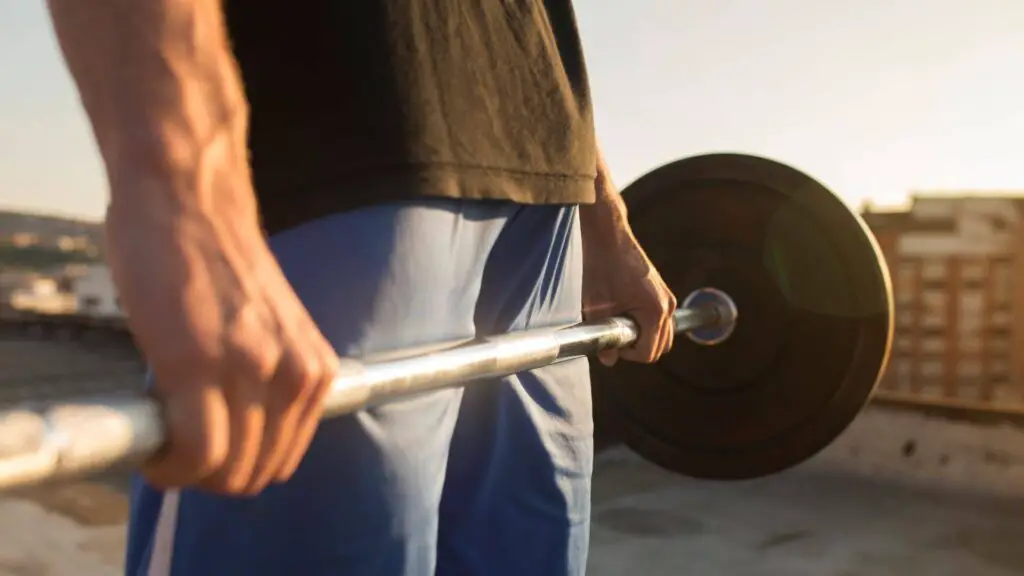It is generally not recommended to rely on a single exercise, such as deadlifts, as the sole means of strength training. While deadlifts can be a valuable exercise for developing strength and muscle in the lower body, it is important to include a variety of exercises in your strength training routine in order to ensure that all muscle groups are being adequately trained. This can help to prevent imbalances and injuries, and can also lead to better overall physical fitness.
There are several factors to consider when determining whether deadlifts alone are enough for your strength training needs. These include your fitness goals, your current level of strength and muscle mass, and any specific muscle groups that you may want to target. It is always a good idea to consult with a qualified fitness professional or trainer to help design a strength training program that is appropriate for your needs. They work your glutes, hamstrings, and lower back muscles. However, many people don’t include them in their regular workout routine.
If you want to add deadlifts to your routine, make sure they are done alone. Doing deadlifts alone provides a good amount of context for the muscles that they are working.
Can deadlifts alone build muscle?
Deadlifts can be an effective exercise for building muscle, particularly in the lower body. The muscles of the back, hips, and legs are all heavily involved in the deadlift, and performing the exercise with a heavy weight can stimulate muscle growth in these areas.
However, it is generally not recommended to rely on a single exercise, such as deadlifts, as the sole means of strength training. In order to build muscle effectively, it is important to include a variety of exercises in your strength training routine in order to adequately train all muscle groups and prevent imbalances.
In addition to strength training, it is also important to consume enough protein and calories to support muscle growth. Adequate nutrition, along with a consistent strength training program that includes a variety of exercises, can help to promote muscle growth and development.
How Do I Do Deadlifts Alone with no support?
To perform a deadlift alone without any support, you will need to use a barbell or a pair of dumbbells. Here is a basic step-by-step guide to performing a deadlift with a barbell. Once you have all of those pieces in place, it’s time for the real work:
- Stand with your feet hip-width apart, with your toes pointed slightly outward.
- Place the barbell in front of you, with your feet positioned under the barbell so that it is close to your shins.
- Bend your knees slightly and grip the barbell with an overhand grip, using a grip that is slightly wider than shoulder-width apart.
- Keep your back straight and your chest up as you lift the barbell off the ground, driving through your heels and using your legs and hips to lift the weight.
- As you lift the weight, keep the barbell close to your body and focus on squeezing your glutes and engaging your core muscles.
- Once the barbell is at hip height, pause for a moment before slowly lowering the weight back down to the starting position.
To perform a deadlift with dumbbells, follow the same steps as above, but use a pair of dumbbells instead of a barbell. Be sure to keep a firm grip on the dumbbells and maintain good form throughout the exercise. As with any strength training exercise, it is important to use proper form to avoid injury and ensure that you are effectively targeting the intended muscle groups.
How heavy can I deadlift?
The amount of weight that you can lift while performing a deadlift will depend on a variety of factors, including your current strength level, your training experience, and your physical characteristics. Some people may be able to deadlift significantly more weight than others due to differences in muscle mass, body proportions, and other factors.
In general, it is recommended to start with a moderate weight and gradually increase the weight as you become stronger and more comfortable with the exercise. It is important to use good form and to stop the exercise if you feel any pain or discomfort, as lifting too much weight can increase the risk of injury.
It is also a good idea to work with a qualified fitness professional or trainer, who can help you determine an appropriate weight for your strength level and assist you with proper form. As you progress and become stronger, you may be able to increase the weight that you lift during deadlifts, but it is important to do so gradually and to continue to focus on good form.
Science Behind Performing Deadlifts Alone
The deadlift is a compound exercise that involves multiple muscle groups and joints. The primary muscles involved in the deadlift include the muscles of the back, hips, and legs, including the glutes, hamstrings, and quadriceps.
During a deadlift, the muscles of the back and hips work to lift the weight off the ground, while the muscles of the legs help to drive the weight upward. The core muscles, including the abs and obliques, also play a key role in stabilizing the body during the exercise.
Performing deadlifts with a heavy weight can stimulate muscle growth in these areas, leading to increased strength and muscle mass. However, it is important to use proper form when performing the exercise to avoid injury and ensure that the intended muscle groups are being effectively targeted.
Benefits Of Performing Deadlifts Alone
There are a few potential reasons why someone might choose to focus on deadlifts as their primary strength training exercise:
- Deadlifts are a compound exercise: Compound exercises, like deadlifts, involve multiple joints and muscle groups, making them a great choice for building overall strength and muscle mass. Deadlifts specifically target the muscles of the back, hips, and legs, making them a great choice for improving overall lower body strength.
- Deadlifts can be modified: There are many different variations of the deadlift that can be used to target specific muscle groups or to accommodate different fitness levels. For example, you can perform traditional barbell deadlifts, dumbbell deadlifts, or kettlebell deadlifts, or you can use an exercise ball or a resistance band to add additional challenge. This versatility makes deadlifts a good choice for people of all fitness levels.
- Deadlifts can be incorporated into other workouts: Deadlifts can easily be incorporated into a variety of different workout routines, making them a convenient and effective exercise for busy people. For example, you can perform deadlifts as part of a full-body strength training routine, or you can use them as a finisher at the end of your cardio workouts to add an extra challenge.
If you’re interested in adding deadlifts into your routine, ensure they are part of a comprehensive training program that includes other cardiovascular exercises such as running or biking. Combined with a healthy diet and adequate rest, these exercises will help you achieve your fitness goals.
How much time It Takes To Recover After Deadlifts?
The amount of time it takes to recover after performing deadlifts will depend on a variety of factors, including your fitness level, the intensity of your workout, and your individual recovery needs.
In general, it is normal to feel some muscle soreness after performing deadlifts, particularly if you are new to the exercise or if you have increased the weight or intensity of your workout. This muscle soreness, known as delayed onset muscle soreness (DOMS), is typically most pronounced 24-48 hours after the workout and can last for several days.
To help recover after performing deadlifts, it is important to get plenty of rest and allow your muscles time to recover. It can also be helpful to engage in low-intensity activities, such as walking or stretching, to help improve circulation and reduce muscle soreness.
In addition, it is important to stay hydrated and consume enough protein to support muscle recovery. Finally, consider using techniques such as foam rolling or massage to help alleviate muscle soreness and promote recovery.
Conclusion
In conclusion, while deadlifts can be a valuable exercise for building strength and muscle in the lower body, it is generally not recommended to rely on deadlifts alone as the sole means of strength training. In order to achieve optimal physical fitness and prevent muscle imbalances, it is important to include a variety of exercises in your strength training routine.
Deadlifts can be a great addition to a well-rounded strength training program, but it is important to consider your fitness goals and current strength level when determining whether they are appropriate for your needs. It is always a good idea to consult with a qualified fitness professional or trainer to help design a strength training program that is appropriate for your needs.

